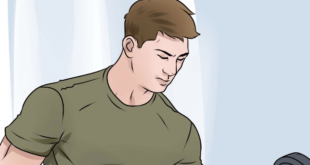Pomidor Quixote
Daily Stormer
September 26, 2019
Humans are mutating.
The modern world dramatically changed the environment and people’s appearances. We have cities made out of monochrome concrete rectangles instead of trees, the internet instead of public squares, and convenience stores instead of hunting trips.
Everyone’s letting go of their muscles and adapting to mobility-scooter-based transportation, hunching to stare at luminous screens for hours and inhabiting cubicles like bugs in a hive.
It is in this context that a very important choice presents itself every day.
Adapt to the modern world as if it were eternal and discard our history and evolution, or reject modernity and go full Greek Mind Warrior?
The choice is up to you.
It’s hard to believe in today’s day and age, but humans weren’t actually meant to spend all that much time sitting on a daily basis. Our early ancestors were constantly on the move, either avoiding predators or migrating to a more habitable environment, and our bodies evolved accordingly. Still, you wouldn’t know that judging by today’s norms; most people spend their days simply moving from one chair to the next. All of that sitting can cause a variety of health problems, but a new study is proposing a rather simple solution: stand up for your health.
According to researchers from the University of Granada in Spain, spending more time standing up can help our bodies burn more energy and offset the negative health effects of an inactive lifestyle. Just by standing instead of sitting or lying down, our bodies burn 45 more calories every six hours.
The study’s author recommend the widespread adoption of standing desks, which allow employees to stand while they work in an office setting. Adjustable-height standing desks are already quite common in Nordic countries (Norway, Sweden, etc.), but researchers say these desks should be utilized all over the world
…
“It is really important to change your position,” recommends Jonatan Ruiz, one of the study’s authors. “If a person were to get up, take 10 steps, and sit down again, it appears that the effects of a sedentary lifestyle would be greatly reduced. Therefore, we must educate our school-age children and young people, as well as teachers, about the importance of avoiding spending long periods of time sitting down to considerably reduce the negative consequences of a sedentary lifestyle such as excess weight and obesity, or the risk of developing cardiovascular disease.”
Standing instead of sitting is just one part of the equation. But what about the big chunk of the day where people are not able to stand up?
Getting a refreshing sleep isn’t always just a matter of an early night, the position you sleep in can have also a significant effect on your health.
New research commissioned by bedding specialists Ecosa observing the sleeping habits of 4,500 Australians found close to 50 per cent were sleeping in a way that caused health problems.
…
Ringo Chan, CEO of Ecosa, has ranked the five sleeping positions from best to worst – and revealed what you can do to break any bad habits.
1. Side position
According to 55 per cent of Australians who took part in the questionnaire, side sleeping is a preferred position.
And it’s one, Mr Chan said is also proven best for optimum health.
Side sleeping helps open the airways and is a position many people find comfortable and easy to settle into,’ he told Daily Mail Australia.
‘It’s also safest for pregnant women, and can help reduce snoring for those with sleep apnoea.’
2. Freestyle position
Data from the survey revealed freestyle sleeping, a way of sleeping that’s not fixed to any one position, is the second most popular with 23 per cent saying its their preferred.
Mr Chan said while freestyle sleepers do move around a bit during the night, doing so was good for the body’s circulation and nutrient distribution.
He added freestyle sleepers are more likely to wake up feeling fresher in the morning as their joints are won’t stiffen during the night.
3. Back position
Back sleeping ranked as the third most popular position with 15 per cent of those questioned saying it was their favoured sleeping style.
While fewer said they enjoyed this position, Mr Chan said he rated it as one that’s best for your back.
…
4. Stomach position
Data showed that just 6.7 per cent of participants who took part in the survey admitted to sleeping on their stomachs.
Healthline reports sleeping on your stomach has some benefits, including reducing snoring and diminishing sleep apnoea.
However, it’s also taxing for your back and neck: The position can cause pain, headaches, and poor posture.
‘If you do sleep on your stomach, your pillow height is critical to your neck health,’ Mr Chan said.
‘Generally, a very low pillow or no pillow at all is recommended for stomach sleepers, as the standard height of a pillow will raise your neck too high.
5. Fetal position
…
This style earns its name from being most similar to how a child might sleep, that is on their side with this legs curled up underneath them.
‘The fetal position is a popular sleeping position for many,’ said Mr Chan adding ‘and can be a comfortable way to keep your spine protected and snoring at bay.’
Standing up instead of sitting may be difficult at first, because most people’s muscles are not used to having to do what muscles are supposed to do. That’s all the more reason to stand up.
What will it be? The deforming comfort of modernity or the sculpting discomfort of struggle?
 Daily Stormer The Most Censored Publication in History
Daily Stormer The Most Censored Publication in History






